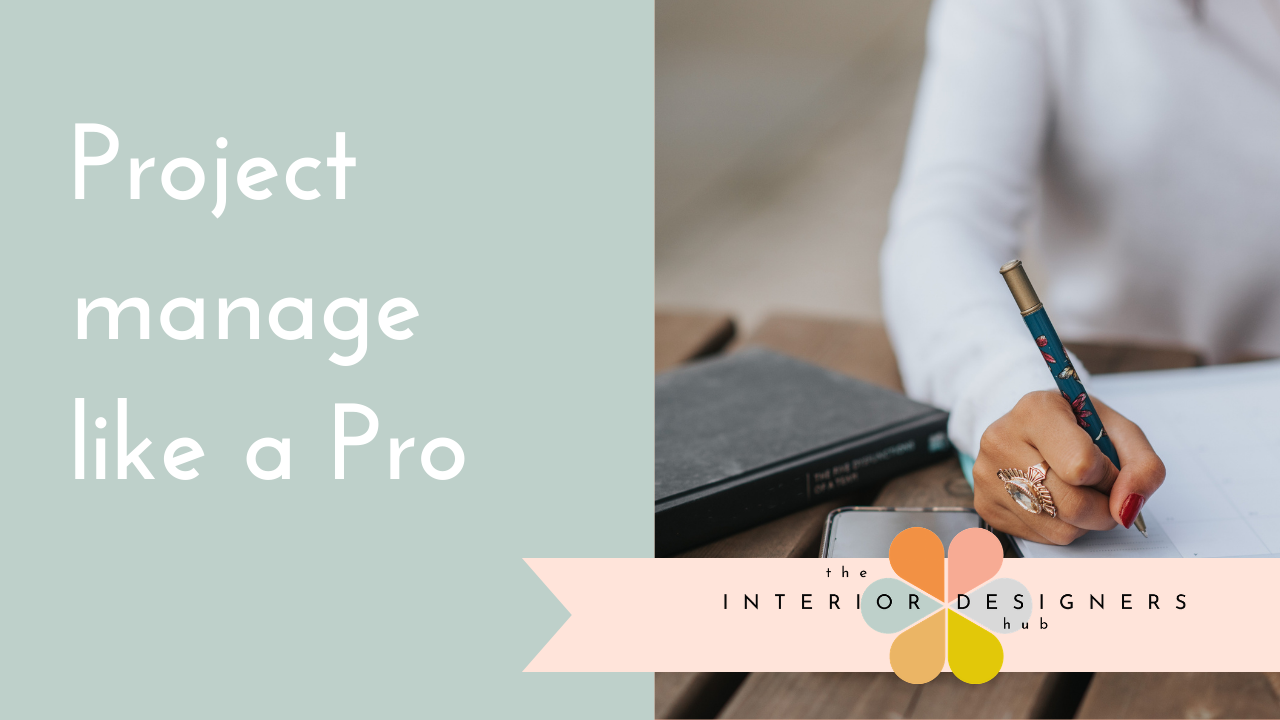Project manage like a pro

As an Interior Designer, you will need to know the fundamentals of project management.
A) so, you can ensure a smooth client journey, hello glowing testimonials and customer referrals! And
B) to experience a stress-free project that you enjoy and learn from.
In this blog we’ll be running through how to manage an interior design project from the initial client enquiry through to the handover.
Build rapport right from the beginning
People buy from people, so it is incredibly important to start communicating like a human right from the first enquiry. This means avoiding sounding robotic in your reply and instead empathising with their pain points.
Systems, systems, systems
Take the stress out of the onboarding journey by setting up a proper process. Use a calendar booking tool like Calendly so clients can book a call in with you according to your availability.
You can set-up automation that sends a welcome kit to prospective client’s with helpful information about how you work and what they can expect from you. This is a great way to make a good first impression and elevate your professionalism.
The importance of preparation
Prepare for every stage of project management, starting with preparing for your first call well in advance. Do your research and use the information you find to help steer the questions you will ask. Give your calls some structure and ensure you are the one leading. Keep an open mind with how the call might go so you are prepared for all eventualities and set boundaries ahead of time.
The three stages of your client call
There are three stages of the client call: fact finding – gather as much information as possible, overview of the project - how it will run working with you and finally you can talk about your fees and your packages.
Before you jump on the call it’s so important to understand exactly what you want to achieve when you first speak to a potential client. Aim to gather as much information as possible so you can make a decision on whether you’d be a good fit for the client.
Again, remember to prioritise understanding their pain points and empathise with the challenges they face.
Then comes the consultation
The client consultation is another information gathering step, but this time in person when you can really understand the nitty gritty of the project.
Having the right mindset will result in a positive consultation. The consultation should be an enjoyable step that sees you getting to know the needs of the client even more. Remember you are the expert and you will have ideas and recommendations that they are going to love. Let the client know that this stage is still about gathering information and not about presenting a design brief.
How to prepare for the consultation
Plan for the practicalities well in advance including the date, time and your journey there. Keep communication channels open to avoid appointments being rescheduled or missed.
There will be some essentials you’ll need to bring with you to take notes, measurements and make sketches. It would also be helpful to bring samples and colour reels as well as any paperwork you’ll need to pass over to the client.
Concept development
By preparing for the consultation, there’s no doubt you would have nailed the consultation. Using the information, you’ve gathered during the initial client call and consultation, you can now develop the design concept.
Make it very clear to your client what you’ll be presenting back to them, clarifying that it’s not a detailed design at this stage. Agree how many concepts you’ll be presenting and how many revisions they’ll be able to request.
Detailed design
Depending on the size of the project, this could be the last stage of the project management. Create the full design and in some cases include the technical design.
Delivery & review
Once the final designs have been drawn up, you might need to deliver the project ensuring a full schedule has been put in place.
This is when you will need to source furniture, fixtures & equipment and project manage the design. Leading the project and managing any sub-contractors who need to support you in delivering the project.
Once you have completed the job and your client is happy, you’ll need to gather feedback and review what went well and what could be improved for future projects. This stage is so important and shouldn’t be skipped. Not only will it help you to develop your skills as an Interior Designer, it will also support your marketing efforts. Always ask yourself if the project could be used as a case study for marketing?
Project management 101
Hub Insider Members not only have access to detailed workshops to help you throughout the entire project management process but the community is a great place to troubleshoot and get real-time advice on any issues that might arise during your projects.
Not sure how to set up and run your own business?
👇 Grab our step by step roadmap and stop guessing! 👇
By submitting this form you consent to receiving marketing emails. You can subscribe at any time.






